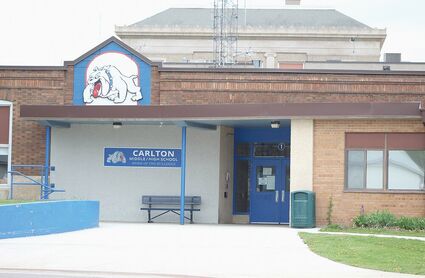Carlton, Wrenshall deal won't happen
June 25, 2021

Pine Knot News photo
The Carlton school board seems poised to restructure the district without a high school.
Consolidation between the Carlton and Wrenshall school districts is no longer on pause. It's dead. The Carlton school board on Monday voted to remove consolidation from its list of future options for the foundering district. Left on the list are two expensive options for district residents: turning the South Terrace elementary into a preK-8 school and releasing high schoolers to another district, or creating a new preK-12 school at South Terrace.
While the Carlton board plans to conduct a $10,000 survey of residents about preferences for the future, consolidation will not be mentioned in the s...
For access to this article please
sign in or
subscribe.




